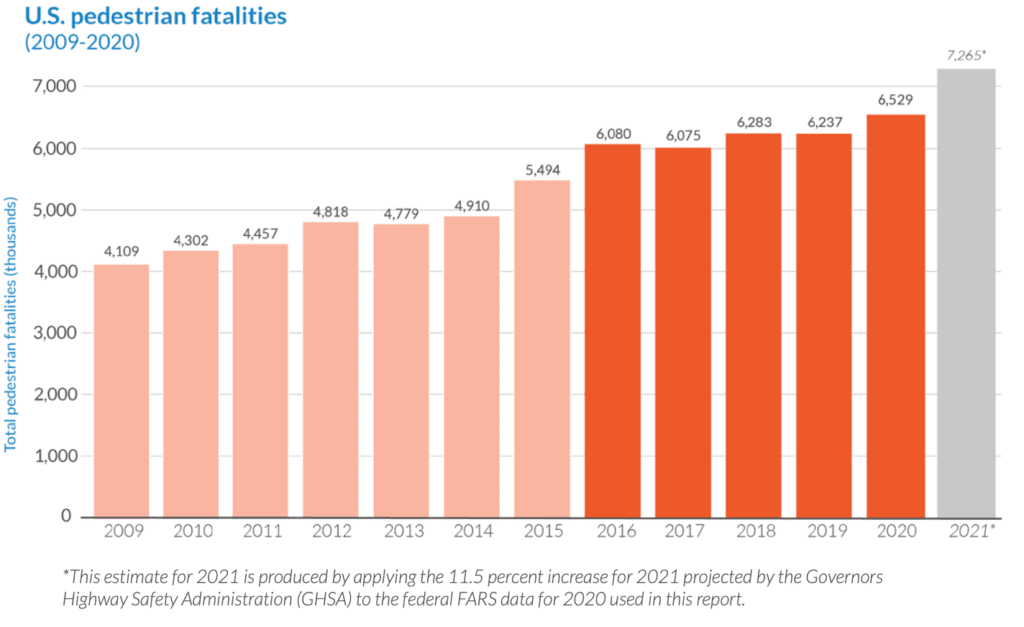Part 1 of our series on Building Safer Streets

By Ian Thomas
Over the last decade, annual pedestrian fatalities in the U.S. have increased by 52%. More than 6,500 people were killed while walking in 2020 and vehicle speed was a critical factor in every case.
How lower speeds save lives
If a car moving at 20 miles per hour strikes a pedestrian, the probability that it will be a fatal collision is quite small – typically about 1 in every 40 incidents. However, the pedestrian is four times more likely to be killed if the vehicle’s speed is 30 mph, twenty times more likely at 40 mph, and the probability of death rises to 90% if the collision speed is 50 mph. And pedestrians are not the only road users made more vulnerable by higher speeds – bicyclists, wheelchair users, and occupants of vehicles are all much more likely to be killed or seriously injured in higher-speed collisions.
Therefore, a simple and effective safety strategy would be to reduce vehicle speeds on roadways where collisions are more likely.

With that in mind, we’re introducing a new non-technical blog series titled, “Building Safer Streets” Future posts will discuss the interaction between speed and safety, bad designs that have made America’s roads so dangerous, and how we can modify them to reduce vehicle speeds and save lives.
This series is written for the non-expert who wants to know what they can do to make streets safer in their community. For too long we have allowed street design to be the province of experts. But our streets are getting more dangerous for those outside of cars.
Streets are for everyone
While expertise is important, ultimately streets must reflect our values. And values belong to the community as a whole, not to the experts. The laws and technical manuals that govern street design for too long have prioritized the rapid movement of vehicles at the expense of safety and quality of life. This is even though the profession knows, from data what actually works to make streets safe where people are present.
This series will work to demystify the technical aspects of street design, so that community members can push back against bad traffic engineering practices, and work for safer communities that are more accessible and inclusive. Which, by the way, is also a recipe for economic vitality and stronger community life.
Stay tuned, let us know what you think, and feel free to share ideas for further installments.